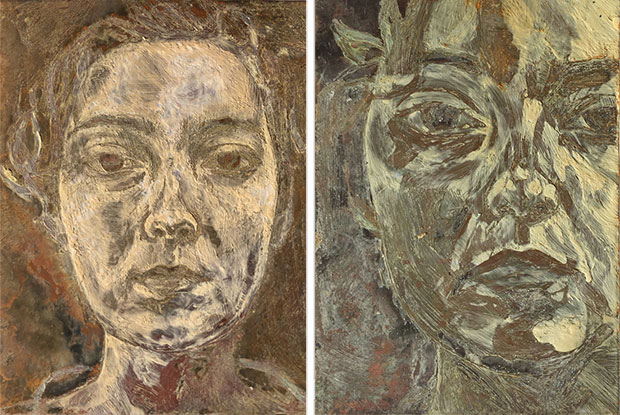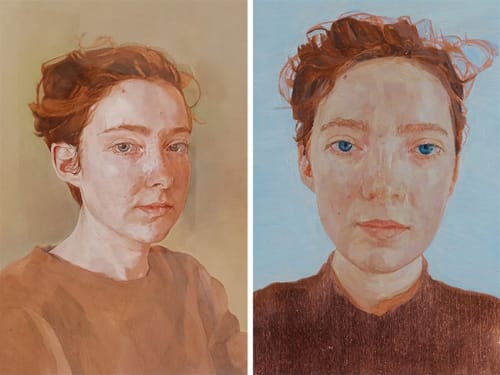Art has always felt like the right path for Sydney-based Natasha Walsh. The young artist is a big believer in trusting her intuition, and frequently experiments with untraditional materials which mirror her "very stubborn" nature. We sat down with Natasha to talk about her process and how winning the Newcastle Art Gallery's Kilgour Prize has led to bigger and better things.
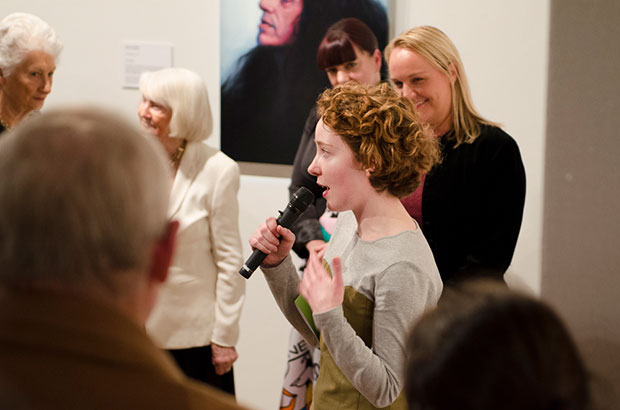
Can you tell us a bit about how you got started making art? I've always been a very visual thinker and problem solver. When I was growing up I struggled a lot with reading and writing, but understanding larger scientific concepts, complex images and patterns, or creating narratives came completely intuitively. I remember spending most of the time at school daydreaming because I couldn't understand the wriggling letters on the whiteboard or a teacher's droning voice but then coming home and being excited to talk about and imagine black holes or string theory with my dad. Thinking creatively about the world and translating those thoughts into my stories or drawings is how I've always understood and engaged with the world. I always knew that I was an artist – my brain was just wired that way. 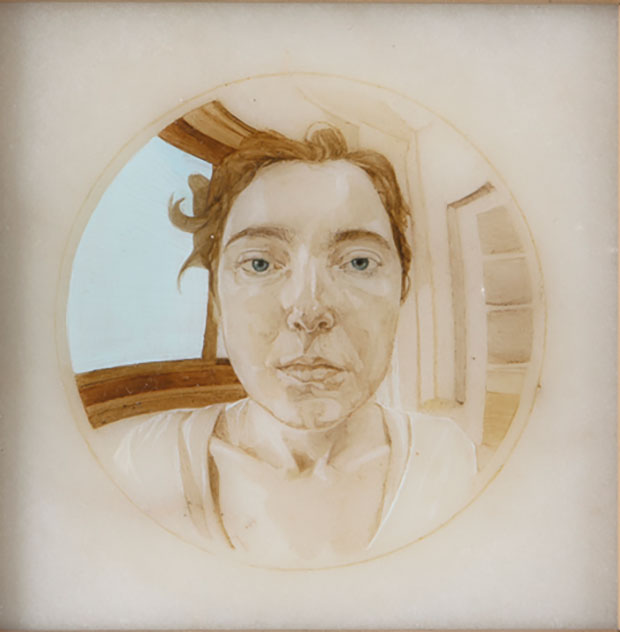
Natasha's winning entry to the 2018 Kilgour prize – a self-portrait painted on marble.
Tell us a bit about how you created your winning entry to last year’s Kilgour Prize. I had a small slab of marble, which was lying in the window of my studio. At the time, I was working with salts and acids and I needed a break. I had collected a small convex mirror a few days before and I was interested in how it bent the space in my studio – an interesting object that seemed to look at the world around it. So, I decided to marry the two and paint the mirror as a still life on the marble’s surface. The flat luminous space of the marble was thereby seemingly pushed out and into space by a very fine application of pigment in oil. The fact that my face was there, 'seen' by the little warped mirror, was incidental. The subject of the work was the object and the painting itself.
How has your practice progressed since winning the Kilgour Prize last year? At the time of receiving the award, my work had been going through a major shift, which I had been putting on hold for about a year. I had been worried that I would not be able to do this new work justice and knew it would take a considerable amount of resources including time. About a month before receiving the award, I resolved to try and do it anyway – not doing so was making me deeply unhappy. So, I was brainstorming ways I might fund its development, and then the timing of the award took a lot of the stress away from my decision. It gave me permission and some much appreciated support. Hopefully in the next few years I'll finally start to see the new work manifest.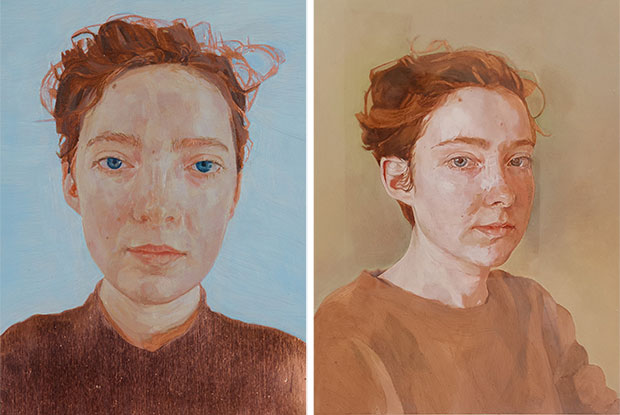
Natatsha's oil on copper works.
What kind of mediums do you enjoy working with most and why? I enjoy working with mediums that resist me and which provide the most room for experimentation. This is because I love to discover my own way into things and I enjoy the results of a struggle or negotiation between my will and a material’s nature. My earlier works include wax and resin, and I've also made works with copper. I have been interested in copper's conductive properties as well as the transformative nature of its oxidation as it reacts to the pigments I've mixed and applied.
With the wax work, I was attempting to capture the feeling of holding my 94-year-old grandfather’s hands as he became increasingly fragile after the passing of my grandmother. I wanted to create works that captured the warmth and transparency of elderly skin, and to explore themes of longing and loss. The copper came about after reflecting on my own ephemerality and brainstorming materials that would evoke this.
Are there any downsides to the mediums you choose? Uncertainty. But that's not really a downside in my book. I didn't have anyone to look to but I didn't really want to. There is a lot of freedom and excitement in that. Obviously, the mediums I work with are very stubborn and contrary but I like that because I'm also quite stubborn.
Portraits done with oil, beeswax and Dammar resin.
Is there a running theme to your work? Each work varies, but I suppose you could say that I've always been interested in looking at being a human in space and time, our fragility and ephemerality and how it can be very isolating. It's always about losing something and becoming something else, and how the artwork itself evokes this in its own materiality.
What are you working on now? A few things. There's a series I've been secretly working on since 2015 in another medium which probably won't be public for another year. I’m also continuing to develop my copper work which I've always seen as a very long-term body of work. In July, I'll go overseas for six months on the Brett Whiteley scholarship, too. I'm treating it as an opportunity to really develop this new work in a completely different context.
What’s one piece of advice you’d like to pass onto other young and emerging artists? Really try and listen to your intuition. If you doubt yourself, it's really easy to fall into the problem of giving too much credence to the opinions of others, whether this is other artists you surround yourself with or the books and articles you read. Always try to critically examine any new information and where it's coming from. Also, always be willing to re-examine, critique and question your work in turn, otherwise it will never grow.